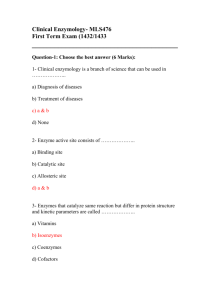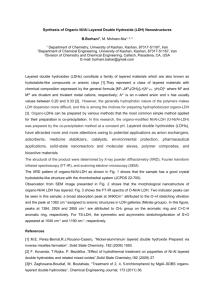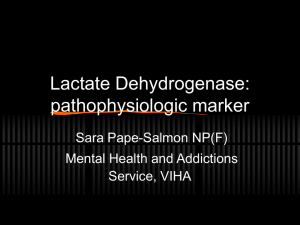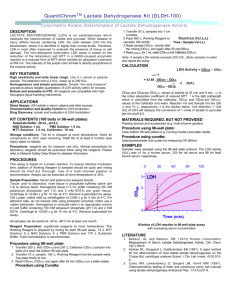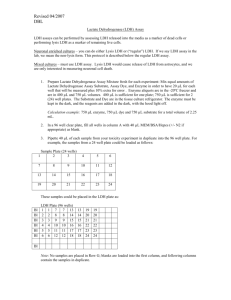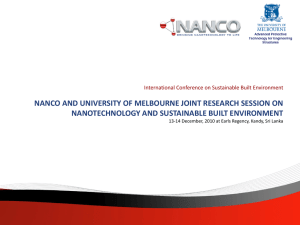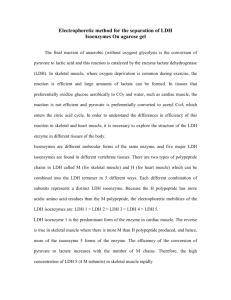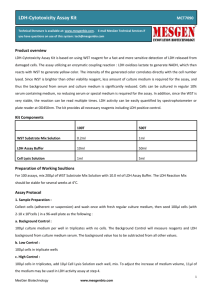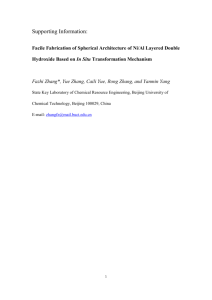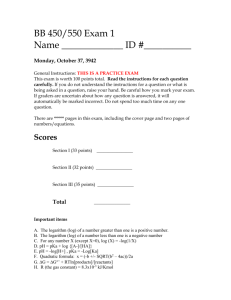In our experiment
advertisement
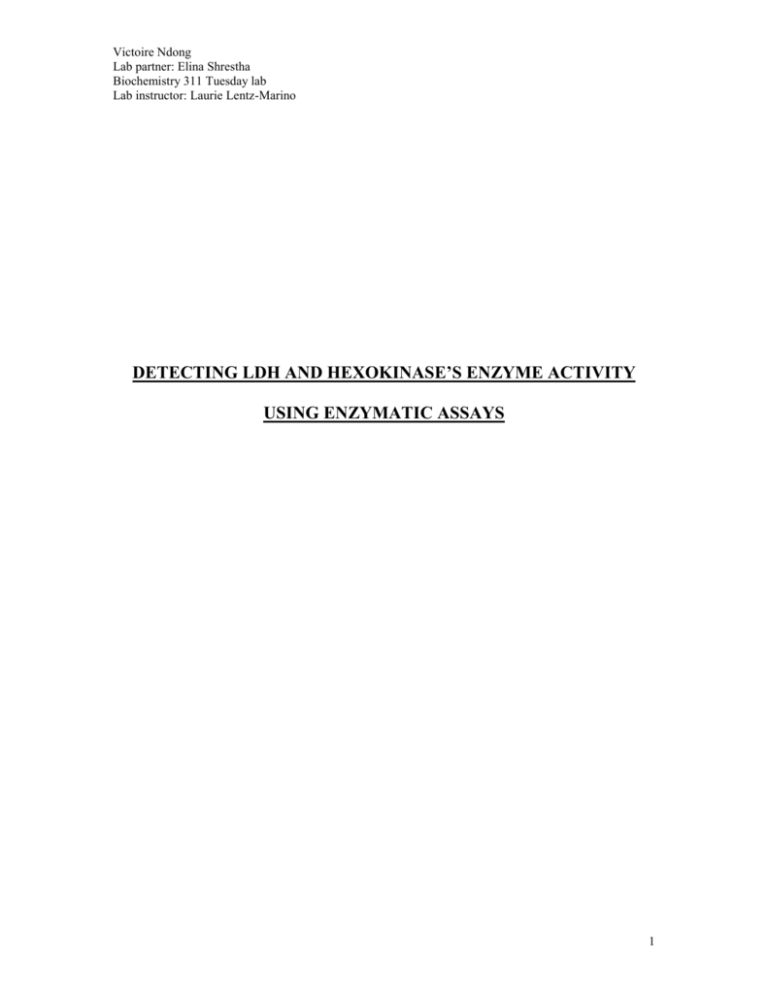
Victoire Ndong Lab partner: Elina Shrestha Biochemistry 311 Tuesday lab Lab instructor: Laurie Lentz-Marino DETECTING LDH AND HEXOKINASE’S ENZYME ACTIVITY USING ENZYMATIC ASSAYS 1 Victoire Ndong Lab partner: Elina Shrestha Biochemistry 311 Tuesday lab Lab instructor: Laurie Lentz-Marino DETECTING LDH AND HEXOKINASE’S ACTIVITY USING ENZYMATIC ASSAYS ABSTRACT Enzymes are catalyst and they can cause a reaction to go faster without being used up. There are six types of enzymes: Oxidoreductases, transferases, hydrolases, lyases, isomerases and ligases. Enzymatic assays, like the hexokinase and LDH experiment we did, are used to verify the enzyme’s activity. Hexokinase and LDH are biological catalysts that are very important in biological reactions such as turning lactate into pyruvate or phosphorilating glucose. In our experiment, we used the spectrophotometer and the scintillation method to detect enzyme activity. RESULTS AND CALCULATIONS In our experiment, we first set up the LDH reaction using the mixture without an enzyme as a blank first, then we put the full mixture in the spectrophotometer and read the absorptions. Table1 (attached) shows the absorption values with respect to time. Figure number one is the plot of the absorption vs time of the LDH reaction. The slope we got for our graph was ΔA/min = 0.1646. The concentration of the enzyme was calculated by using the equation : Concentration = slope / 6220(ε m value for NADH). [LDH] = 0.1646/6220 = 2.64 10^(-5). After that we calculated the number of moles that were produced per minute [LDH] x (.003L) = 7.93 x 10^(-8) moles/min Unit = 7.93 x 10^(-2) For the hexokinase reaction, we used our data to make a plot of the concentration of the product vs the time (figure 2) and we used the slope of the graph to calculate the units using the same equations The slope is 112.6. 112.6 x (1/500) = 0.2252 nmoles/min 0.2252 x 0.001 μmoles/nmole = 2.252 x 10^ (-4) unit 2 Victoire Ndong Lab partner: Elina Shrestha Biochemistry 311 Tuesday lab Lab instructor: Laurie Lentz-Marino Table 1: Concentration of substrate vs time Time in Minutes Concentration of product 0 2 5 10 15 529 603 788 1204 2280 Figure 2: Concentration of Glucose-6-P vs time in minutes. Concentration of product Vs Time y = 112.6x + 360.14 Conc of product 2500 2000 1500 Series1 1000 Linear (Series1) 500 0 0 5 10 15 20 Time (mn) DISCUSSION LDH is an enzyme that catalyses the reaction that changes lactate and NAD+ into Pyruvate and NADH. During that reaction, two hydrogens are pulled of off: one is taken by the NAD+ and the other will be released into the environment. We set up this reaction to check the enzyme activity of LDH and see how fast it made the reaction go. Units are used to calculate the enzyme activity meaning the rate of disappearance of the substrate or the rate of appearance of the product. The unit value we got for our LDH was high meaning a lot of LDH can catalyze a reaction. 3 Victoire Ndong Lab partner: Elina Shrestha Biochemistry 311 Tuesday lab Lab instructor: Laurie Lentz-Marino Hexokinase is an enzyme that changes glucose into glucose-6-P. The glucose was labeled with carbon 14 and it was counted using a paper impregnated with + charges that will capture the negatively charged molecules like ATP, ADP and glucose-6-P. The Unit we got for this experiment was lower meaning it takes little enzyme to make the product. We got results that were not very consistent and our possible sources of error were that we didn’t put enough enzymes or we didn’t wash the paper very well before putting them in the scintillation counting machine. 4
